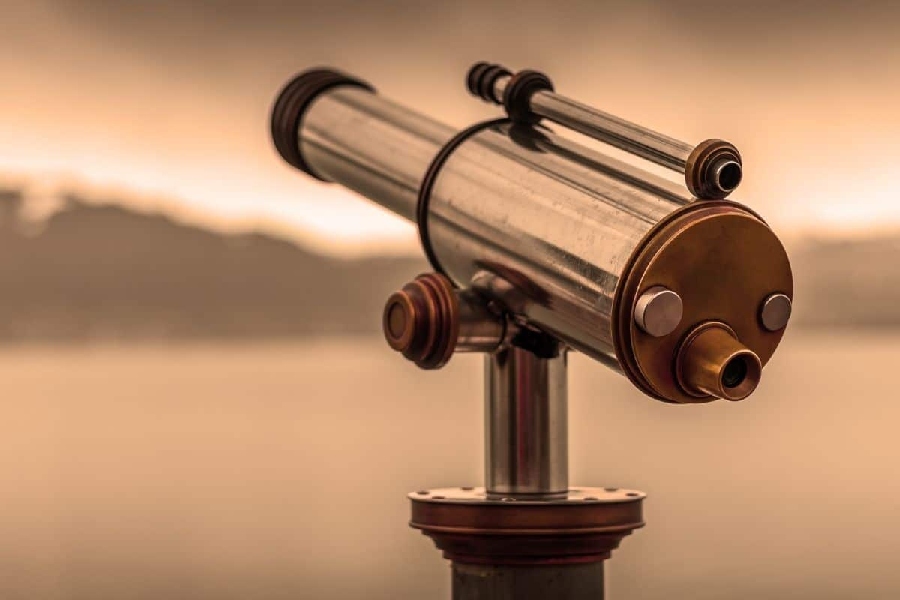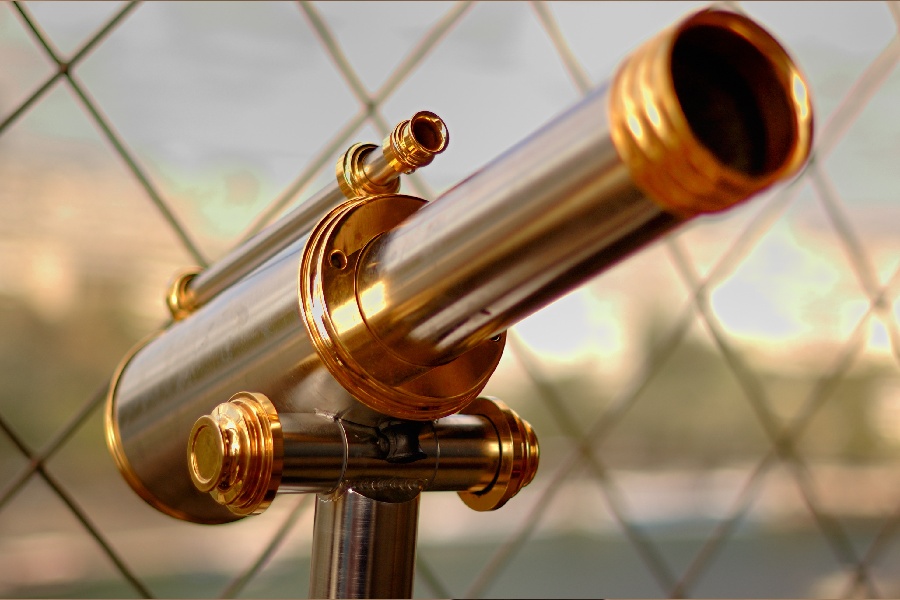The telescope, a marvel of human ingenuity, has revolutionized our understanding of the cosmos. Its invention unveiled a universe far grander and more complex than we could have ever imagined, forever altering our place within it. But who can claim the title of “inventor” of this transformative tool?
As we go deeper into the history of optics and astronomical observation, we discover that the answer is not a simple one but rather a story of multiple innovators, collaborative efforts, and continuous refinement.
Join us on an exploratory dive as we investigate the tinkering minds, accidental discoveries, and incremental improvements that collectively might stake claim as inventors. By the end, you will have clarity on who invented the telescope and how this amazing tool has evolved.
We will survey suspects, weigh evidence, and bridge science with history to uncover the origins of stargazing innovation where credit blurs. The answer reveals how shifting viewpoints layer upon collective genius to ultimately reshape paradigms.

Who Invented the Telescope?
Who invented the telescope? The invention of the telescope is often credited to Hans Lippershey, a Dutch spectacle maker, in 1608. Lippershey applied for a patent for his telescope design in the Netherlands.
However, the invention of the telescope is associated with multiple individuals around the same time, including Jacob Metius and Zacharias Janssen. But who actually invented the telescope? Dutch eyeglass maker Hans Lippershey is the first to patent the telescope technology.
The telescope played a crucial role in advancing astronomy by allowing astronomers like Galileo Galilei to make groundbreaking observations, such as discovering moons around Jupiter and craters on the Moon, in the early 17th century.
Dutch eyeglass makers – Pioneers of early telescopes
The early 17th century saw a flourishing of Dutch spectacle makers, their skills honed by years of crafting lenses for eyeglasses. Among them, two figures emerged as key players in the development of the first telescopic instruments – Hans Lippershey and Zacharias Janssen.
Around 1608, both Lippershey and Janssen are credited with independently crafting what would become known as the “Dutch perspective glass“.
This early telescope consisted of a convex objective lens (gathering light) and a concave eyepiece lens (magnifying the image). While simple in design, it offered a significant leap in magnification, allowing objects to appear three times closer.
Offering a leap in magnification power, the Dutch telescope proved immensely influential. News of the invention rapidly traversed Europe, with Galileo soon improving upon the design. Within a few years, telescopes emerged as invaluable scientific tools, finally revealing a detailed cosmos beyond the naked eye.
Convex lenses – The key to magnification
The inclusion of convex lenses was crucial. Unlike concave lenses used in spectacles, convex lenses bend light inwards, focusing it to a point. This focusing ability allowed distant objects to appear larger and closer, laying the foundation for future telescope designs.
From Lippershey’s initial Dutch “perspective glass” to Galileo’s modifications, early telescopes shared a critical common component: the convex objective lens. The glass lens bulged outward at the center, with curved surfaces that refracted and focused beams of light from observed objects down towards a focal point.
Positioning another concave ocular lens to further magnify this image proved a revolution for astronomy. But the power originated in the convex light-gatherer bending rays into a tiny, bright image. Convex shapes allow wider light collection angles from the aperture for optimal illumination and clarity, given limited glass quality.
The more advanced compound microscopes, high-power refracting telescopes, and modern camera lenses all evolved from these pioneering convex collectors placed in tubes. Though simple, the enduring convex lens remains a pillar of optical instruments by exploiting the refractive properties of curved transparent objects.
Galileo Galilei’s refined version – Taking astronomy to new heights
While Lippershey and Janssen laid the groundwork, it was Galileo Galilei who truly transformed the telescope into a powerful tool for astronomical observation.
In 1609, he heard news of the Dutch invention and quickly set about constructing his own telescope. He improved upon the design by using higher quality lenses, increasing magnification to eight times and later to 30 times.
Revolutionizing astronomy and cosmology
Galileo’s refined telescope opened a window to the heavens, allowing him to make groundbreaking discoveries. He observed craters and mountains on the Moon, moons orbiting Jupiter, and phases of Venus, shattering the prevailing geocentric model of the universe and laying the foundation for modern astronomy.
Establishing telescopes for observation enabled the spread of Galileo’s paradigm-changing discoveries through his drawings and writings. Published star maps and planet renderings electrified Europe as people experienced the Moon’s landscape or Saturn’s rings up close for the first time.

17th Century Telescopes – Evolution and Refinement
Following Galileo’s lead, the 17th century witnessed a flurry of innovation in telescope design. Keplerian telescopes, featuring two convex lenses, offered higher magnification and a wider field of view.
Reflecting telescopes, pioneered by Isaac Newton, used mirrors instead of lenses to eliminate chromatic aberration, a limitation of refracting telescopes. These advancements pushed the boundaries of observation, leading to discoveries like Saturn’s rings and nebulae.
Improved optics and magnification capabilities – Seeing deeper into the cosmos
Innovations in lens grinding and polishing techniques improved image quality and sharpness. Larger telescopes were built, allowing astronomers to observe fainter objects.
With increased magnification, astronomers could discern more detail, leading to discoveries like the double star systems and the Huygens’ observation of Saturn’s moon Titan.
The development of silver-coated mirrors for reflecting telescopes further improved light gathering power. By the late 1700s, Herschel mapped thousands of nebulae and faint galaxies – revealing our place in an expansive, dynamic cosmos.
Astronomical observations with early telescopes
The early telescopes were instrumental in revolutionizing our understanding of the cosmos. Galileo’s observations challenged the established geocentric model, paving the way for a heliocentric view of the Solar System. Kepler’s laws of planetary motion were derived from telescopic observations.
Observations of supernovae by astronomers like Tycho Brahe and Johannes Fabricius contributed to the understanding of stellar evolution. Each discovery chipped away at the limitations of human knowledge, revealing a universe vastly different from our everyday experience.
Huygens and Cassini discovered Saturn’s rings and moons, adding complexity to our view of the Solar System. These incremental revelations via telescope painted an intricate, structured image of space – no longer formless and static but vivid with activity.
Types of telescopes developed in the 17th century
The 17th century saw the development of various telescope types, each suited to specific observational needs.
The Gregorian telescope, with two mirrors, offered a longer focal length and improved image quality. Catadioptric telescopes, like Schmidt-Cassegrain, combine lenses and mirrors for higher performance.
These diverse designs allowed astronomers to study objects ranging from planets and moons to distant stars and nebulas, pushing the boundaries of knowledge with each new observation.
19th Century Telescopes – Building on a Legacy
The 19th century saw further advancements in telescope technology. The invention of the achromatic telescope, using multiple lenses to correct for chromatic aberration, significantly improved image quality.
The development of the reflecting telescope by William Herschel led to the discovery of Uranus, further expanding the known boundaries of our solar system.
Development of Infrared Technology and Its Uses in Astronomy
The 19th century also saw the emergence of infrared technology. While invisible to the naked eye, infrared radiation can penetrate dust and gas clouds, revealing celestial objects hidden from optical telescopes. Lord Rosse’s Leviathan telescope, with its 6-foot diameter mirror, was the first to detect infrared radiation from his reflecting telescope.
In the fall of 1721, French astronomer Jacques Bovedere made a groundbreaking discovery while observing a distant star cluster. Adjusting his homemade reflecting telescope, Bovedere discerned unusual elongated objects protruding from three stars. Meticulous notes and sketches revealed these strange “weather vanes” extending outwards from the stars.
Jacques Bovedere’s Discovery of Distant Weather Vanes With a Telescope
Bovedere had discovered one of the earliest documented cases of protoplanetary disks – rotating disks of dense gas and dust orbiting young stars during planetary formation. His serendipitous breakthrough demonstrated that telescopes could reveal key stages of stellar evolution.
It opened doors for studying planet birth and proved the technology’s immense potential for unlocking astronomical secrets. This pivoted astronomy from pure observation toward a true investigative science.
Bovedere published detailed sketches of the unusual protrusions in scholarly circles, stimulating excitement. Others soon used telescopes to systematically search star-forming regions, cataloging protoplanetary systems at core stages of our understanding.
Conclusion
From Lippershey, Janssen, and the early Dutch perspective glass, we trace an arc through Galileo’s critical improvements to Herschel’s mapping galaxies and beyond – each step invented the telescope and advanced its optic power, further transforming our cosmic perspective.
We hope your journey through the origins, evolutions, and scientific revelations of the telescope has painted a picture of how this instrument fundamentally altered understanding from its unexpected beginnings.
By revealing the hidden surfaces of celestial bodies and interstellar phenomena, the quest to see deeper finally placed us within a dynamic expanding universe as active participants rather than detached Earth-bound observers.
As telescope technology progresses into startling new realms, its history reminds us that visionaries often need nothing but simple tools to fundamentally shift paradigms.
